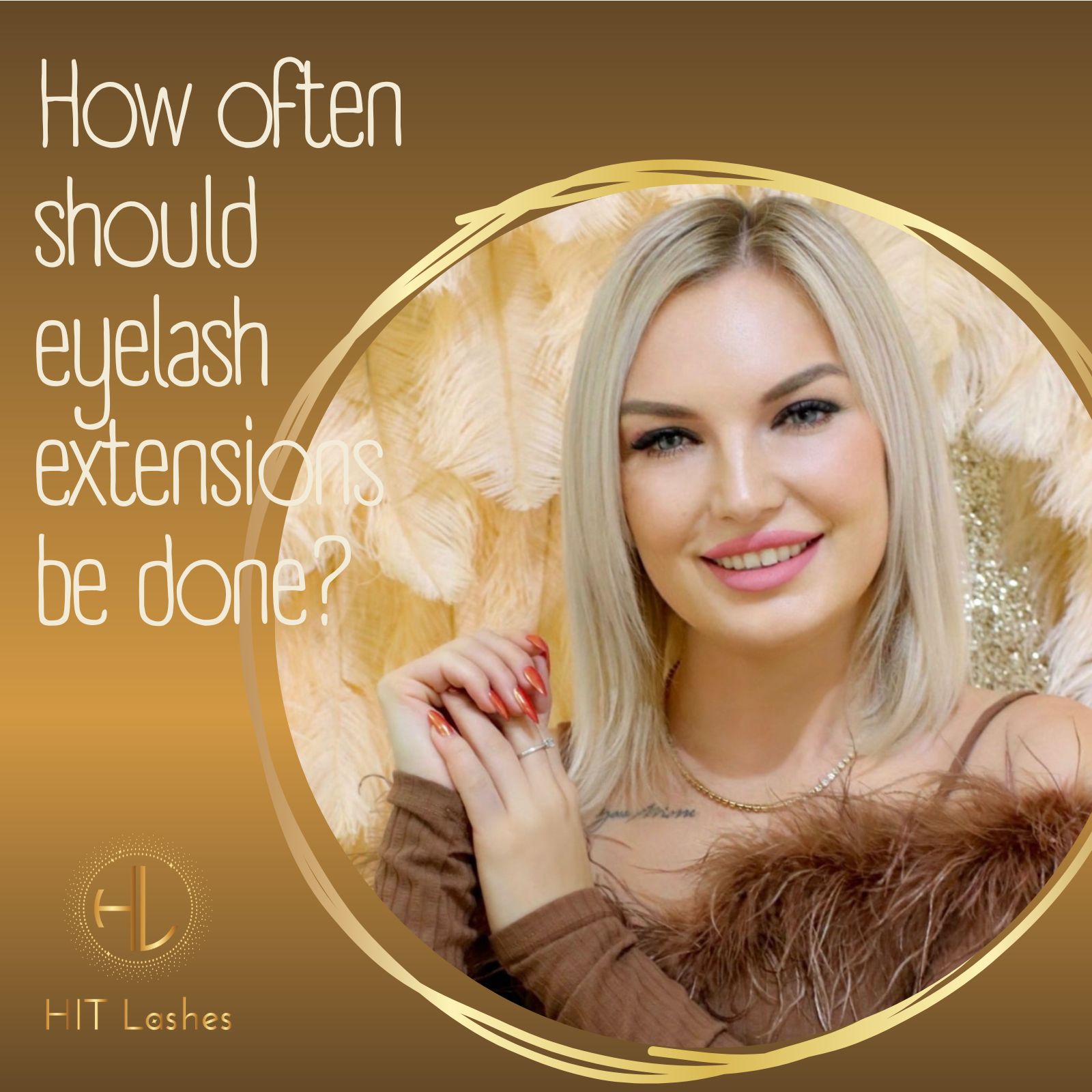
How often should eyelash extensions be done?
You have become a happy owner of luxurious eyelash extensions, but after 3-4 weeks you notice that the results are not as accurate as they were immediately after the procedure? Such changes should not scare you – they are natural and inevitable. Physiology “interferes” with enjoying the amazing effect of extension for an infinitely long time – natural hairs are constantly updated, and thick long eyelashes will certainly be replaced by an untidy eyelash row. It is easy to prevent such unaesthetic changes – it is enough to visit the master in a timely manner to perform the correction.
What is this procedure, what are its pros and cons, how often do you need to correct eyelash extensions – these questions are relevant for girls who have decided to build for the first time. We tried to collect up-to-date information and analyzed the opinions of leading industry experts in order to understand all the intricacies of the salon service.
Peculiarities
Performing eyelash extensions, the master glues one (or two, three or more) artificial eyelashes to each natural one. On average, a human eyelash “lives” up to 90 days, and then falls out, making way for the growth of a new young hair. If the master strictly follows the technology, a synthetic eyelash can fall out only from the natural one to which it is glued.
But native cilia do not grow at the same time, not evenly. According to the stages of growth, they are divided into the following types:
- fluffy or “young” – very soft, thin hairs on which synthetic material cannot be built up (due to the load, they can break off or stop growing altogether);
- medium – quite strong, but still growing cilia, on which extensions are allowed (but it must be borne in mind that as it grows, such a hair will move the glued eyelash away from the eyelid, and as a result, it can curl, sag);
- long – “adult” cilia, the main “carriers” of synthetic material.
After a simple analysis, we see that at the end of 3-4 weeks of wearing extended hairs, up to 30% of your own eyelashes remain in proper condition. And since the synthetic ones glued to them fell out along with the natural cilia, the cilia row became heterogeneous, sloppy, unkempt – bald spots appeared, the difference in lengths became noticeable. This means that it’s time to visit the lashmaker.
Step-by-step technology for performing the procedure
Correction involves the restoration of the full volume of eyelashes lost during wear. The procedure is carried out by mechanical removal of protruding, with a peeled off base, regrown synthetic cilia that have lost their direction. By this time, the natural hairs, which were too weak the last time, have already “grown” enough for gluing new artificial ones.
To understand how the correction of extended eyelashes is done, consider the technology for its implementation:
- Assessment of the state of the ciliary row.
- Thorough cleaning of the working area from the remnants of makeup, dirt.
- Accurate removal of broken, strongly regrown hairs (a special oil-based composition is applied in the direction of growth of the ciliary row).
- Degreasing the skin of the eyelids, cleansing the interciliary space.
- Delivery of the eyelash row (building up a new synthetic material to the vacant space).
A timely visit to the master to perform the correction is an opportunity to preserve the luxurious volume, splendor, length of the eyelashes. It is better to plan a visit to the lashmaker on average three to four weeks after the extension. But we remember that the growth rate of natural eyelashes is a very subjective characteristic. One may need an update in a couple of weeks, while others will enjoy a flawless look for a whole month.
It is better to entrust the correction to a specialist who has grown cilia. Why? It’s simple – the materials for the procedure must be identical to those used for building (brand manufacturer, material parameters, type of glue). By ignoring this rule, you risk getting a poor-quality service.
“Pros and cons”
In the list of pluses of correction:
- financial benefit (usually the service is estimated at 70% of the cost of a full extension);
- time savings (upgrade is about an hour faster than re-growth).
It is rational to correct the ciliary row if your new look is no more than 4 weeks old and at least 50% of artificial hairs have been preserved. Many clients mistakenly believe that if they managed to deliver 10 eyelashes on each eyelid, then the master is simply obliged to carry out a correction, and there can be no talk of re-building.
If you wear eyelashes for more than the recommended period, then the volume of fallen, regrown, unaesthetic hairs is already significant – it will be much more difficult to put the eyelash line in order. In this case, professional lash makers are advised to remove the artificial eyelashes and do the extension again.
As a result of the correction, the lash line is again flawlessly even, neat, well-groomed. But more than 40% of the hairs remaining after the first extension will fall out soon, which means that you will have to enjoy the luxurious effect less (each next session must be repeated after 2-3 weeks). Therefore, re-building is often a priority. The procedure is also preferable from the point of view of hygiene – removing all artificial hairs, the master qualitatively cleans the space between the eyelashes from makeup residues and impurities. When up to 50% of the old extension constantly remains on the eyelids, it is impossible to thoroughly rinse the area between the eyelashes.
To determine which option is right for you, only a qualified lash maker will help, who is able to correctly assess the condition of artificial and “native” hairs. After all, the true professionalism of the master is manifested in the ability to create a stunning expressive look without harming the health of the eyes and natural eyelashes.



